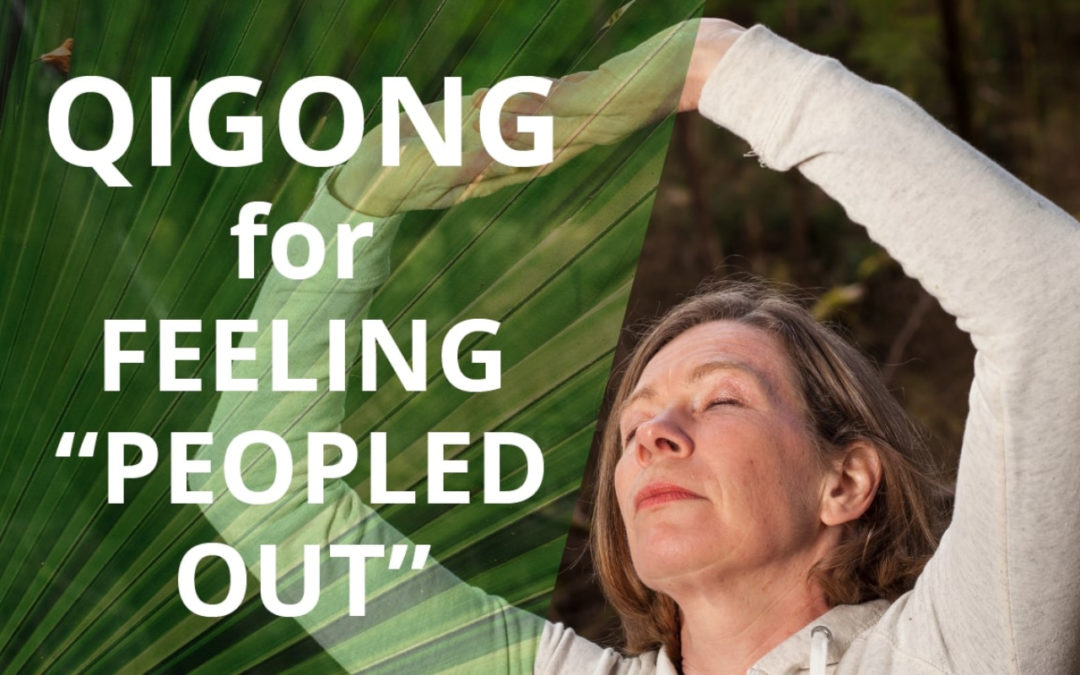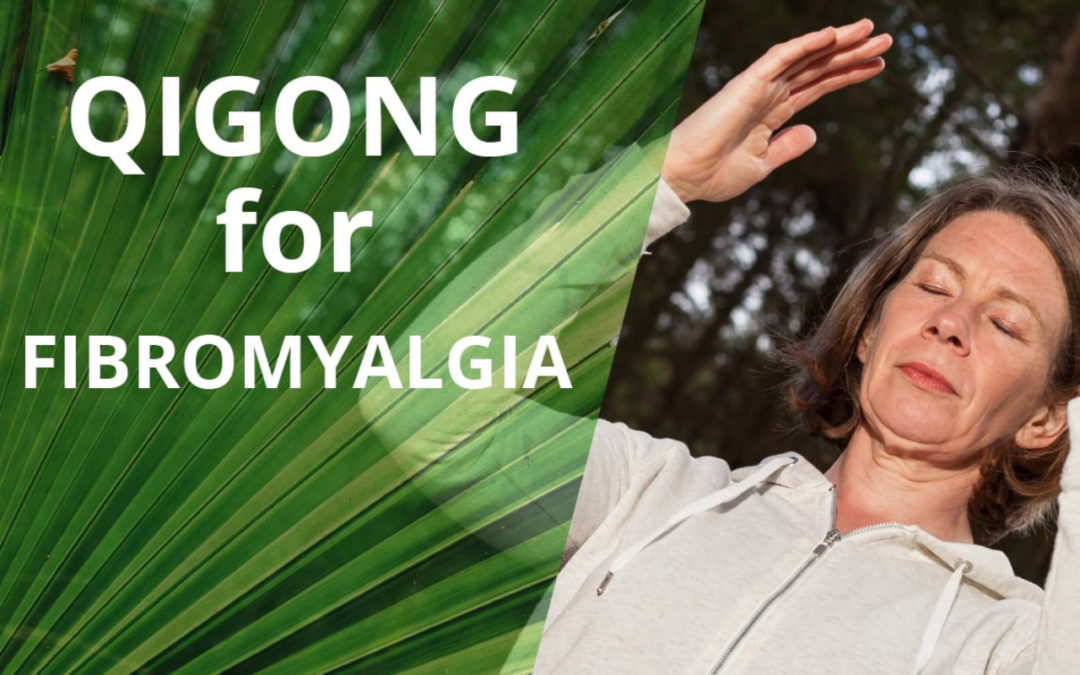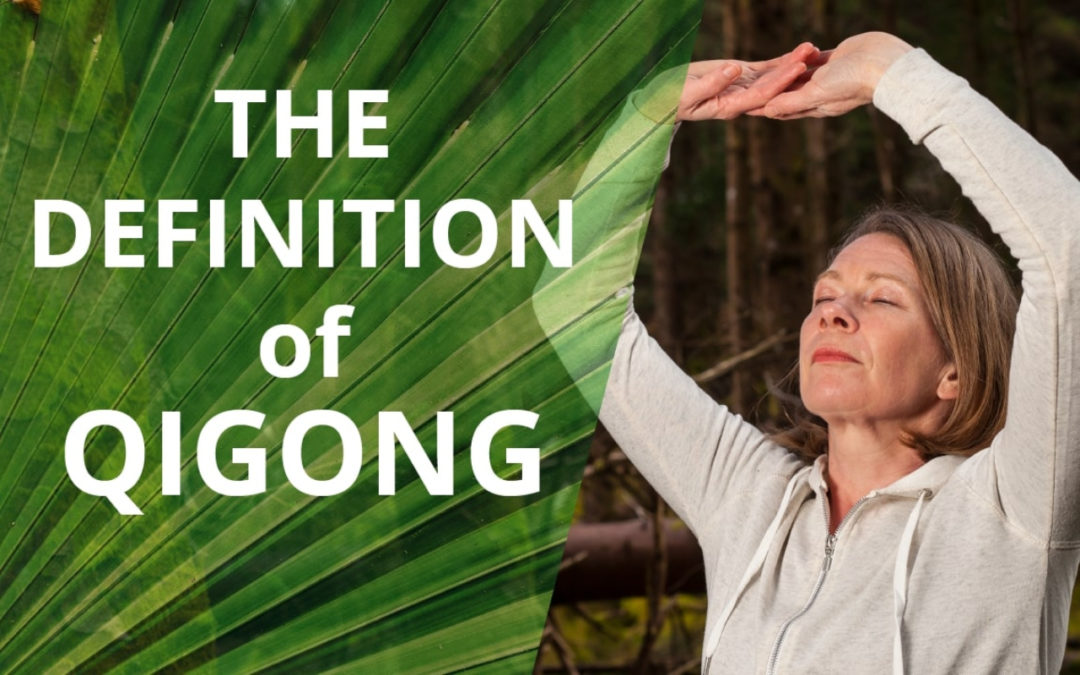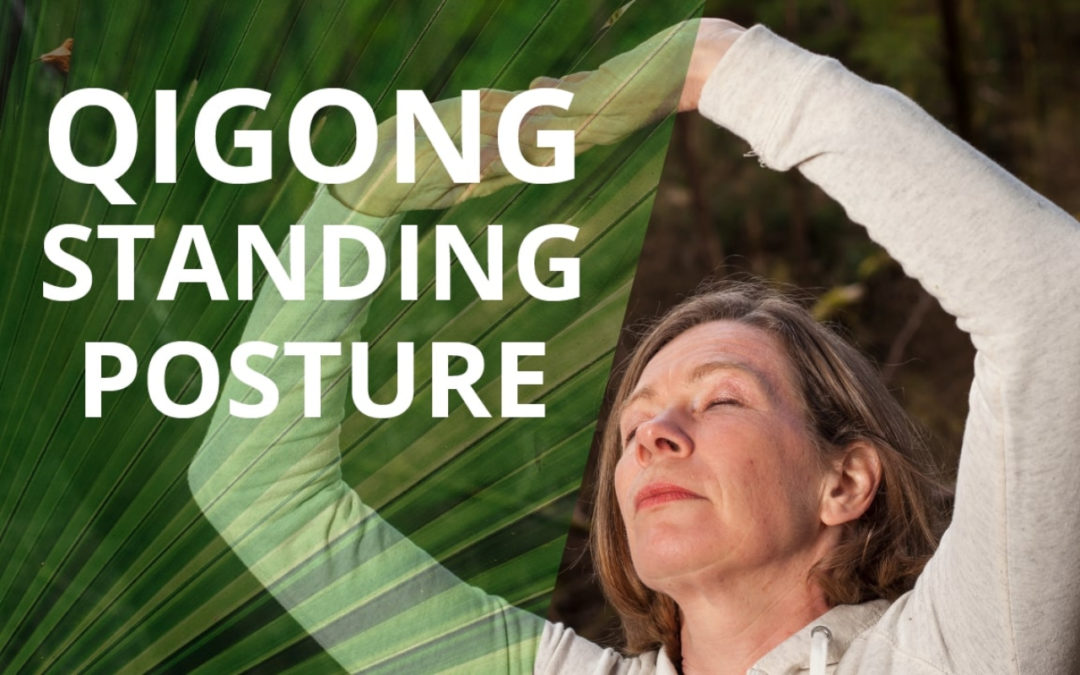
by janicetucker | 19 Dec 2016 | Qigong, Qigong & Emotional Issues, Qigong Routines
This week’s video has a topical theme coming up to Christmas and the holiday season. Of course many people love Christmas but I also meet those who don’t. The reason for this is that they get together with the family and very quickly start to feel a sensation of claustrophobia and stress. People start niggling at each other which makes them want to get out of the situation. They need a bit of space. Myself and my best friend describe this feeling as a feeling of being “peopled out”. When you are “peopled out” you feel like you have had too many people around you for too long! In the video above I talk to you about how to use Qigong for stress relief so that you can cope with the “peopled out” feeling and attain peace of mind over the holiday period.
Janice Tucker is a practitioner of Traditional Chinese Medicine and Medical Qigong, and the founder of the Space To Relax online programme of Qigong video lessons.
Please don’t forget to subscribe to my YouTube channel by clicking the red “Subscribe” button above so you don’t miss my regular videos which are full of useful health enhancing tips. These videos will help you to benefit your health and prevent illness from arising in the first place. Also please give this video a “Like” if you found it informative.
The “Peopled Out” Feeling
When I asked my best friend to describe the “peopled out” feeling she sent me an e-mail with the following superb description of what it is like for her. Is there any trigger, feeling or thought you can identify below?
Triggers
1. Multiple people are demanding things of me simultaneously, without consideration for my priorities.
2. People trying to help me do something that I am perfectly capable of doing.
3. Feeling that I need to engage in small-talk conversations.
4. I have not been able to go outside / have not seen the sky (at least once a day).
5. I am physically uncomfortable (e.g. sore back, stomach ache).
Feelings
• Irritated
• Anxious
• Snappy
• Crowded
• As though I am a pressure cooker on simmer, aware that I need to release the pressure valve or an explosion may occur!!
• Mortified if I do ‘explode’
• Self conscious (exposed), everyone can see how inept and unpleasant I am.
Thoughts
• Rapid re-planning of the “to do list” that I carry around in my head in order to “fit in” others’ priorities, so lots of playing out of scenarios in my head.
• Lots of “I have to…” thoughts (when I really don’t have to!)
• Resentful thoughts about why these people have to be in my space when all I want to do is…..
• Guilty thoughts about having resentful thoughts
• Resentful thought about how “these people” make me feel guilty
• I don’t fit in, I’m not normal
• I’m odd
From the above description you can see how these feelings and thoughts can trigger each other. Before you know it you end up in a vicious spiral connected to having people around you the whole time when you are not comfortable.
Top Tactics To Deal With Feeling “Peopled Out”
1. Get up early (before everyone else) so as to have some alone time, outside – do some tai chi or Qigong (avoid an audience!). Stay up later than everyone else
2. Make excuse that dog needs a walk or I just have to run over to the neighbour to return something.
3. Reiterate my preferences about doing my own ‘chores’ (as they are actually fun for me). Politely reject offers of ‘help’ explaining that this is what I do for relaxation and please don’t take it away from me.
4. Avoid large social gatherings. Certainly avoid hosting large social gatherings.
5. Qigong for Stress Relief: Abdominal Breathing (Lesson 1 in the free Space To Relax Video Series).
6. Qigong for Stress Relief: Discharge Waste Qi With Vibration (Lesson 3 in the free Space To Relax Video Series).
What Do I Do Next?
If you would like to learn more about how to use Qigong for stress relief and the feeling of being “peopled out” you can sign up on the Space To Relax homepage to receive three free video lessons which will be delivered to you by e-mail. Also for a free audio meditation “Calm Your Busy Mind In 8 Minutes” scroll to the bottom of the Space To Relax homepage to sign up for that.
Please don’t forget to subscribe to my YouTube channel by clicking the red “Subscribe” button above so you don’t miss my regular videos which are full of useful health enhancing tips. Also please give this video a “Like” if you learned much more about utilising Qigong for stress relief.
You can head over to my free group on Facebook, “Space To Relax Free Group” and leave any questions for me there. I’ll be happy to answer them. Also, by joining this group, you will receive regular postings of Qigong articles and videos with really useful tips about how to use Qigong to improve your state of health.
Please leave a comment in the comments box next to this video if you now have a clearer direction in which to go to use Qigong for stress and too many people around you!. I’d love to hear your tips as to what you do to minimise the “peopled out” feeling and how you use Qigong for stress relief. If we all share our ideas then we can all help each other to find peace of mind and enjoy the holiday season which is what it’s all about! 🙂
home

by janicetucker | 3 Dec 2016 | Qigong, Qigong Routines, Qigong To Help Manage Specific Health Conditions
I recently asked my Space To Relax Free Group members on Facebook what they would like to see videos about. Three of our members suggested I make a video about how to use Qigong for fibromyalgia and its management.
What is Fibromyalgia?
Fibromyalgia is classified as a syndrome. This means it can involve a number of different symptoms. It’s often misdiagnosed or takes a long time to be diagnosed. This often means that patients have gone through many tests before they are diagnosed with this condition.
Fibromyalgia is a condition that I have often treated in my Chinese medicine and acupuncture clinic. I’m also familiar with using Qigong for fibromyalgia management.
Symptoms of Fibromyalgia
Symptoms can present as widespread pain, anxiety, fatigue, sleep disruption and gastrointestinal symptoms. In my experience anxiety, sleep problems and muscle pains appear to be the three main symptoms that people are struggling with.
The Two Main Areas Of Focus When Using Qigong For Fibromyalgia Management
1. Relaxation
2. Releasing the areas where the Qi is blocked (the areas of pain).
Results from Dalhousie University Study Using Qigong To Reduce Fibromyalgia Symptoms
This study was carried out in 2014 and published in the “Evidence Based Complementary & Alternative Medicine Journal”.
The study group included 100 people. Half were taught Qigong by a Qigong teacher for three and a half days. They were then instructed to practice Qigong for 45-60 minutes per day for 8 weeks. Half were told they were to be put on a waiting list to learn Qigong (the control group).
After 8 weeks the Qigong group reported a significant reduction in pain levels, anxiety levels and an improvement in sleep quality and ability to function. In addition, 4-6 months later the benefits continued.
One of the authors gave the reason for this as “the mindful, meditative state releases neurochemical and immunological messengers that improve healing and reduce pain“.
For those of you who want to read the article please go to:
Reference: Jana Sawynok and Mary Lynch, “Qigong and Fibromyalgia: Randomized Controlled Trials and Beyond,” Evidence-Based Complementary and Alternative Medicine, vol. 2014, Article ID 379715, 14 pages, 2014. doi:10.1155/2014/379715.
Qigong For Fibromyalgia – My Tips
1. For pains and aches. Stretch and extend the arms out to the sides at shoulder level as you breathe out and then gather Qi in with the arms as you breathe in to use the healing properties of Qi to relieve your aches and pains.
2. To improve the general flow of Qi . Circles exercise – Lesson 2 in the Space To Relax free 3 part video series (more details below).
3. For sleep and anxiety. Free 8 minute meditation: “Calm Your Busy Mind in 8 Minutes” at the bottom of the Space To Relax homepage.
4. For back pain. Qigong Standing Posture – see my previous video blog on “The Correct Qigong Standing Posture“.
5. For emotional pain (depression/anxiety). Discharge Waste Qi exercise – Lesson 3 in the Space To Relax free 3 part video series (more details below). You can any emotion or physical pain that you don’t want in your body and quickly get rid of it using this Qigong exercise.
6. For anxiety. See my previous video blog entitled “How To Calm Down With Qigong“.
7. For anxiety and increasing energy levels. Qigong Abdominal Breathing – Lesson 1 in the Space To Relax free 3 part video series (more details below) and there is an extract of an Abdominal Breathing exercise on the Space To Relax programme page.
For Space To Relax paying members there are specific lessons in the programme which will help you. I recommend Lessons 7 & 8 (Yi Tai Stretches), 11-19 (Ba Duan Jin), 45-47 (Walking Qigong).
What Do I Do Next?
If you would like to start using Qigong for fibromyalgia relief you can sign up on the Space To Relax homepage to receive three free video lessons which will be delivered to you by e-mail. For the free audio meditation “Calm Your Busy Mind In 8 Minutes” scroll to the bottom of the Space To Relax homepage to sign up for that.
Also you can head over to my free group on Facebook, “Space To Relax Free Group“. Here you can leave any questions for me there and I’ll be happy to answer them. You will also receive regular postings of Qigong articles and videos with useful tips about how to use Qigong to improve your state of health.
Please leave a comment in the comments box next to this video if you now have a clearer direction in which to go to use Qigong for fibromyalgia and its management. Also I’d love to hear what you do to minimise the symptoms of fibromyalgia if you have this condition.
Please don’t forget to subscribe to my YouTube channel by clicking the red “Subscribe” button above so you don’t miss my regular videos which are full of useful health enhancing tips.
Also please give this video a “Like” if you learned much more about utilising Qigong for fibromyalgia.
home
by janicetucker | 4 Nov 2016 | Qigong, Qigong Routines
I’m going to share with you today a very quick and easy beginner Qigong exercise which will leave your hands buzzing and your body brimming with energy. This is THE perfect Qigong for beginners exercise!
Stand up, get ready to join in and I’ll talk you through it very shortly!
Janice Tucker is a practitioner of Traditional Chinese Medicine and Medical Qigong, and the founder of the Space To Relax online programme of Qigong video lessons.
Please don’t forget to subscribe to my YouTube channel by clicking the red “Subscribe” button if you are watching on YouTube so you don’t miss my regular videos which are full of useful health enhancing tips. These videos will help you to benefit your health and prevent illness from arising in the first place. Also please give this video a “Like” if you found it informative.
THE CIRCLES EXERCISE
Method
1. Check that you are standing in a comfortable position, feet hip width apart with knees slightly bent.
2. Place on hand on top of the other in front of the body.
3. Draw the hands apart slowly. As you lift the hands keep the shoulders relaxed and down.
4. As you raise the hands also raise the body slightly, standing up taller but not locking out the knees. Stay relaxed in the shoulders, avoiding any tension, and keep length in the back of the neck.
5. Gather in energy (Qi) from the outside environment through the hands and finger tips as you raise the arms. Observe any sensations you feel in the hands.
6. As the hands reach the level of the head turn the palms to face each other.
7. As the palms face each other and become closer together sink the weight by bending the knees and draw the hands down in front of the body. The shoulders lead this downward movement and the hands follow. As you do this think of drawing the energy you collected from the outside into the lower abdomen area.
8. Repeat at least three times. The more repeats you perform the more you will feel!
9. To finish, place on hand on top of the other over the lower abdomen area. Circle the hands first in on direction and then in the other.
10. Allow the hands to drop down by your sides. Observe any sensations.
Summary
How do you feel after this? Hopefully you noticed that in a very short space of time something started to happen in your hands. You perhaps feel more awake and a bit more alive!
From this short Qigong for beginners exercise you can see that it doesn’t take very long to notice the benefits of Qigong.
If you’d like to progress a further and learn the full version of this exercise then head over to my Space To Relax homepage. Here you can sign up to receive three free video lessons which will be delivered to you by e-mail. The Qigong for beginners exercise you just did is Lesson 2 in the free video series. By practising these simple 5 minute lessons you will get a flavour of the Qigong benefits of feeling much calmer and at the same time more energetic.
If you head over to my free group on Facebook, “Space To Relax Free Group” you can leave any questions for me there and I’ll be happy to answer them. Also, by joining this group, you will receive regular postings of Qigong articles and videos with really useful tips about how to use Qigong to improve your state of health.
Please leave a comment in the comments box next to this video and share what you observed in your hands! 🙂
Please don’t forget to subscribe to my YouTube channel by clicking the red “Subscribe” button above so you don’t miss my regular videos which are full of useful health enhancing tips. Also please give this video a “Like” if you learned much more about the Qigong standing posture by reading this article.
home

by janicetucker | 14 Oct 2016 | Qigong, Qigong Practice Guidelines & General Information
Often when I tell people that I help them to banish their stress and improve their energy using Qigong I’m met with a quizzical expression. They can easily relate to stress and lack of energy but they have no idea what Qigong is. In this video I explain the definition of Qigong and the meanings of the terms “Qi” and “Gong”. We do far more in Qigong than just working with energy!
Janice Tucker is a practitioner of Traditional Chinese Medicine and Medical Qigong. She is also the founder of the Space To Relax online programme of Qigong video lessons.
Please remember to subscribe to my YouTube channel by clicking the red “Subscribe” button above so you don’t miss my regular videos. These are packed with useful health enhancing tips and exercises. Also please give this video a “Like” if you found it informative.
What is Qigong?
Qigong has been an integral part of Chinese culture since ancient Chinese times. Basically the definition of Qigong is any set of breathing and Qi circulation methods that can:
• improve your health;
• prevent illness;
• strengthen your body
Very loosely translated, Qi is your vital force. It is all types of energy. We are made of this energy and we are also immersed in it so it is all around us in the environment.
The term “Gong” is the power that you have to produce an effect. It is also translated as work. This is the kind of work that involves steady practice. The effects are achieved with steady, ongoing, regular practice.
“Qigong” means “the attainment of Qi”. Medical Qigong, more specifically, involves building your Qi to make your body more resistant to illness and disease. If you are actually ill, medical Qigong can bring your body back into balance so that you regain your health.
Benefit of Qigong Practice
So, by practising Qigong regularly, you can maintain the balance in your health. Also, if you happen to become sick then you can use Qigong to bring yourself quickly back into a good state of health.
If you’d like to learn more Qigong in order to maintain your health and bring yourself back into balance then you can do this by practising for around only 10 minutes per day. You can actually start this by heading over to my Space To Relax homepage. Here you can sign up to receive three free video lessons which will be delivered to you by e-mail. By practising these 5 minute lessons you’ll get a flavour of the Qigong benefits of feeling calm and relaxed.
If you head over to my free group on Facebook, “Space To Relax Free Group” you can leave any questions for me there and I’ll be happy to answer them. Also, by joining this group, you will receive regular postings of health enhancing Qigong articles and videos. Please leave a comment in the comments box next to this video if you now have a bit more clarity around the definition of Qigong.
Please don’t forget to subscribe to my YouTube channel by clicking the red “Subscribe” button above so you don’t miss my regular videos. Also please give this video a “Like” if you now know more about the definition of Qigong that you did before!
home

by janicetucker | 4 Oct 2016 | Qigong, Qigong Routines
This video from Dr Janice Tucker at Space To Relax explains the correct Qigong standing posture. To get the most benefit from Qigong practice you need to stand such that the Qi flows in an unimpeded and unobstructed way around the body.
Janice Tucker is a practitioner of Traditional Chinese Medicine and Medical Qigong, and the founder of the Space To Relax online programme of Qigong video lessons.
Please don’t forget to subscribe to my YouTube channel by clicking the red “Subscribe” button above so you don’t miss my regular videos which are full of useful health enhancing tips. Also please give this video a “Like” if you found it informative.
By making small adjustments in your Qigong standing posture you can make a world of difference to the flow of Qi around your body. When your Qi is flowing freely your health has the potential to skyrocket!
The following extract is taken from Lesson 2 of the Space To Relax Programme of online Qigong video lessons. This is a shortened version of the lesson explaining the correct Qigong stance.
Exercise – The Correct Qigong Standing Posture
1. The Position Of Your Feet
Your feet are important in giving you a stable grounding for Qigong practice. Look down and your feet and check that they are parallel and shoulder width distance apart. Your toes should not be pointing outwards or inwards.
2. The Knees
Your knees should be very slightly bent. There should be softness in your knees so that the knee joints are not locked.
3. Hips and Lower Back Area
To check this place one hand in the small of your back and one on your lower abdomen. Then make a hollow in your lower back so that it is curved by sticking the buttocks out. Feel how the vertebrae in the lower back feel squashed or compressed. Your lower back will feel tight.
Next tilt your pelvis forward by tucking the buttocks under. You will feel the lower back flatten and the whole area open up. You will feel as though there is space in this area. This openness allows the Qi to flow up and down the spine much more freely.
4. Shoulders and Arms
Your shoulders should be loose and relaxed. Your hands hang down from the shoulders by the sides of the body.
5. Head and Neck
Your neck, like your lower back, is an important area in which to maintain space and openness in order to allow for the free flow of Qi. Make sure that your head is not tilted too far forwards or too far back. Imagine the top of your head is being pulled up by a string. This creates length in the back of the neck. At the same time tuck the chin in very slightly. As you do this you will feel the back of your neck extending and opening up.
Summary
These adjustments will promote the free flow of Qi up and down your spine and in to your head.
The Qigong standing posture should be relaxed. Once you are in this position practice Abdominal Breathing in order to allow your Qi to begin to flow freely around your body.
Your Qigong standing posture is the basis of many standing Qigong exercises. Once you can stand correctly you will notice huge differences in the Qi flow around your body. Your energy will quickly feel as though it is supercharged as the Qi zooms around your body in an unimpeded way! 🙂 This is turn leads you to gain much more energy, clarity, calmness and focus.
More Information
If you’d like to learn more about the Qigong standing posture and and learn some more exercises that you can practice from this Qigong standing posture then head over to my Space To Relax homepage. Here you can sign up to receive three free video lessons which will be delivered to you by e-mail. By practising these simple 5 minute lessons you will get a flavour of the Qigong benefits of feeling much calmer and at the same time more energetic.
If you head over to my free group on Facebook, “Space To Relax Free Group” you can leave any questions for me there and I’ll be happy to answer them. Also you can leave a comment in the comments box next to this video.
Please don’t forget to subscribe to my YouTube channel by clicking the red “Subscribe” button above so you don’t miss my regular videos which are full of useful health enhancing tips. Also please give this video a “Like” if you learned much more about the Qigong standing posture by reading this article.
home





